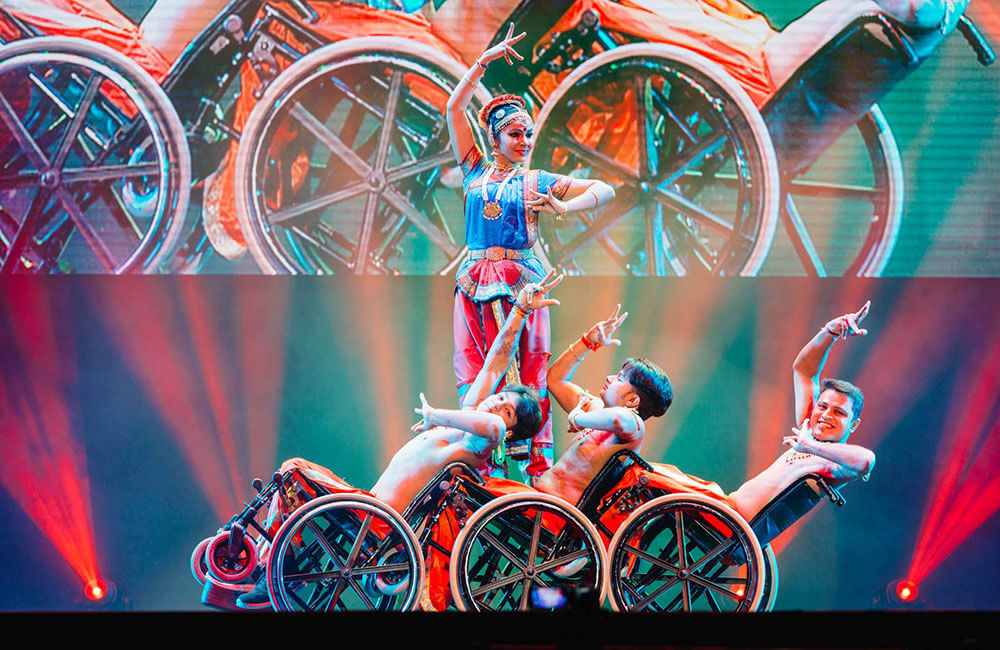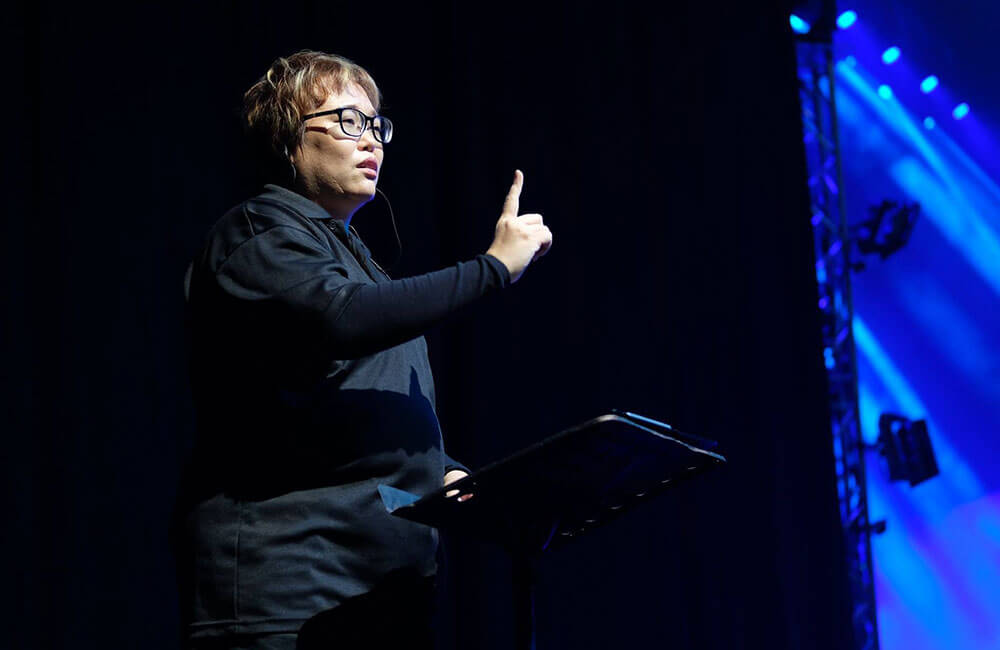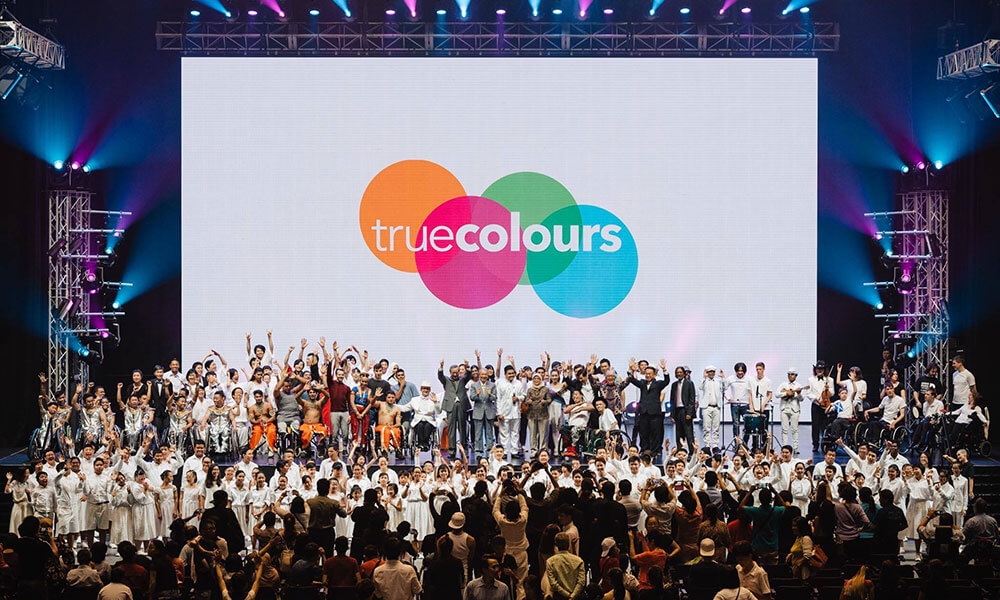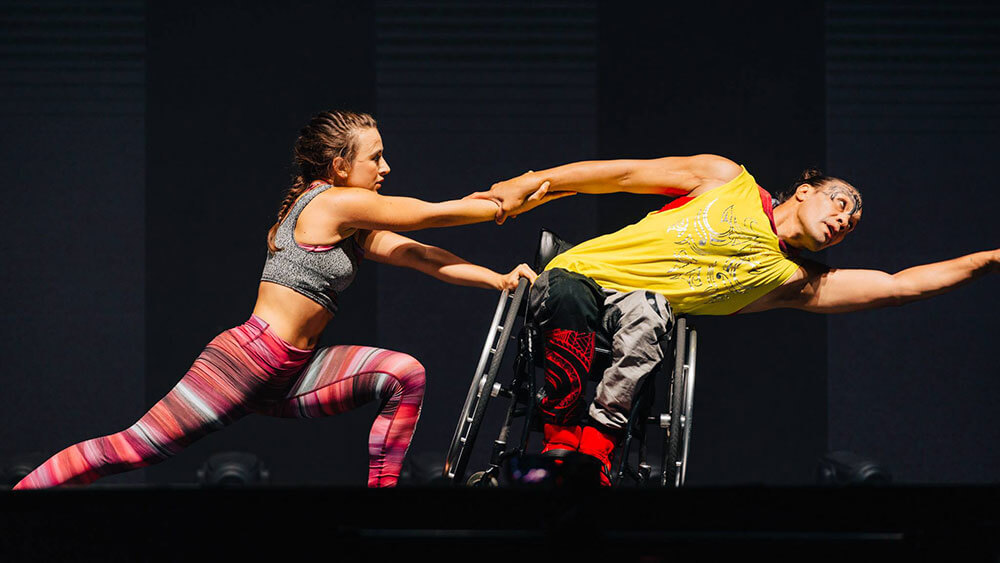
Brydie Colquhoun and Rodney Bell perform “HariHari,” by Movement of the Human, at the festival. (All photos courtesy (True Colours Festival 2018/The Nippon Foundation)
BestCities Global Alliance, a global network of 12 convention bureaus and destinations, which recently launched a new brand platform for its 20th anniversary, has published new research on accessibility in meetings. The “Universal Accessibility in Meetings” report was created with the goal of promoting awareness among planners and suppliers on the need to remove barriers for delegates with disabilities and to provide recommendations for how to make business events more inclusive.
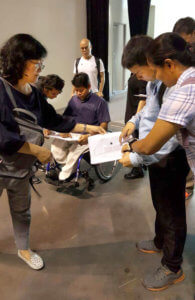
Bangkok-based accessibility partners from Asia Pacific Center on Disability confer with True Colours teams on the accessible seating plan, optimal stage height for wheelchair users, and stage access matters.
The report featured real-life examples of events — hosted in BestCities’ partner destinations — that make inclusivity among those with disabilities a key focus. True Colours Festival, held in conjunction with the inaugural Arts and Disability International Conference (ADIC), in Singapore last March, serves as a case study.
True Colours Festival
ADIC 2018 brought 400 conference participants — including social service professionals, policymakers, and disabled and able-bodied artists — from Singapore and overseas to the Marina Bay Sands Convention Centre and the Enabling Village, March 22–23. ADIC was produced to create more inclusion and accessibility for people with disabilities. The two-day conference gathered thought leaders in fields including education and the arts to discuss best practices and share examples of artists with disabilities who have become catalysts for change in the arts community.
True Colours Festival — the first and largest gathering of artists with disabilities to perform at an event in the Asia Pacific region — took place immediately following ADIC, March 23–25 at the OCBC Square stadium, between the Singapore Indoor Stadium and the outdoor Festival Village. Admission and all activities were free of charge for the outdoor Festival Village. The festival also included live, multi-media performances from international artists with disabilities at the Singapore Indoor Stadium.
Organizers of the festival not only wanted to shine a spotlight on the performers, but to make the event fully participatory for attendees with disabilities as well. Here are some of the special measures they took:
- A more inclusive seating plan. The Singapore Indoor Stadium was able to cater to varying capacity and seating requirements, since lower seating tiers were flexible. Ground-level seats were configured so that wheelchair users could be seated as close to their companions as possible.
- Ticket giveaways. Organizers used a ticket sales campaign called MyTreat for individuals and companies to purchase concert tickets for Singapore Indoor Stadium performances on behalf of people with disabilities who could otherwise not afford a ticket. The tickets were pooled and then distributed by disability organizations to recipients.
- An accessible festival website. The True Colours Festival website (truecolours.sg) is screen reader-friendly to those with visual impairment. Font sizes and color contrasts are adjustable for easier reading. The website also includes closed captioning and English subtitles for videos to cater to deaf and hard-of-hearing users.
Activities at the free, outdoor Festival Village included assistive technology showcases, workshops about how to have better conversations with individuals living with disabilities, Paralympic sports tryouts, and more. Participants could also experience firsthand what it’s like to live with different disabilities. In the “Through Deaf Eyes” activity, presented by the Singapore Association for the Deaf, visitors could experience everyday activities without the ability to hear, and at “Dialogue in the Dark” they went through similar activities in complete darkness, to understand what life is like for the visually impaired.
Jasmine Zhu is a Convene associate editor.
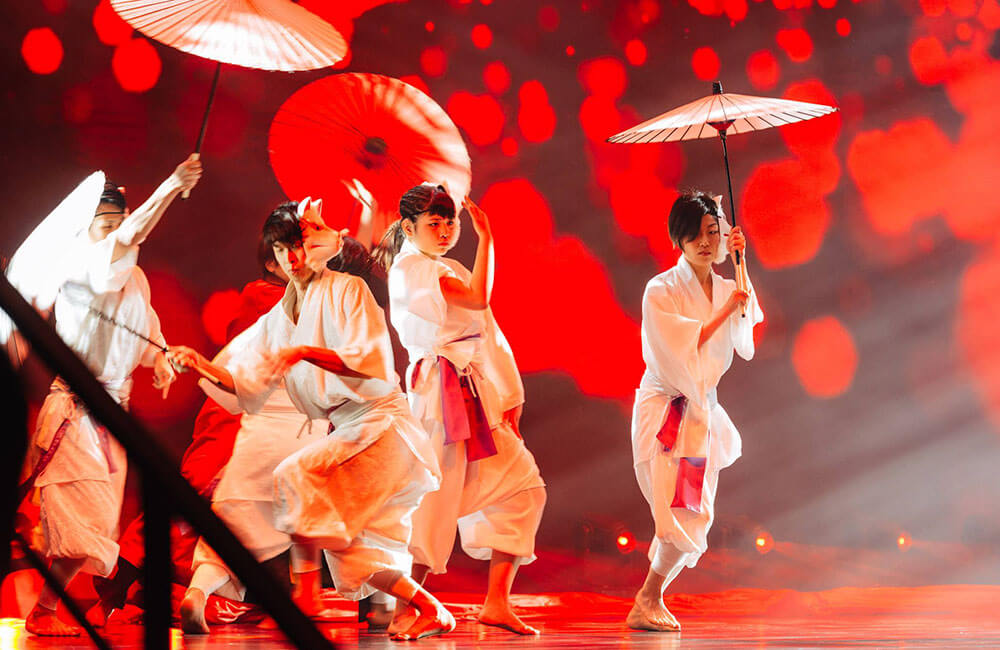
Members of the inclusive dance company BOTANxDAZZLE from Japan perform a commissioned work at a concert.
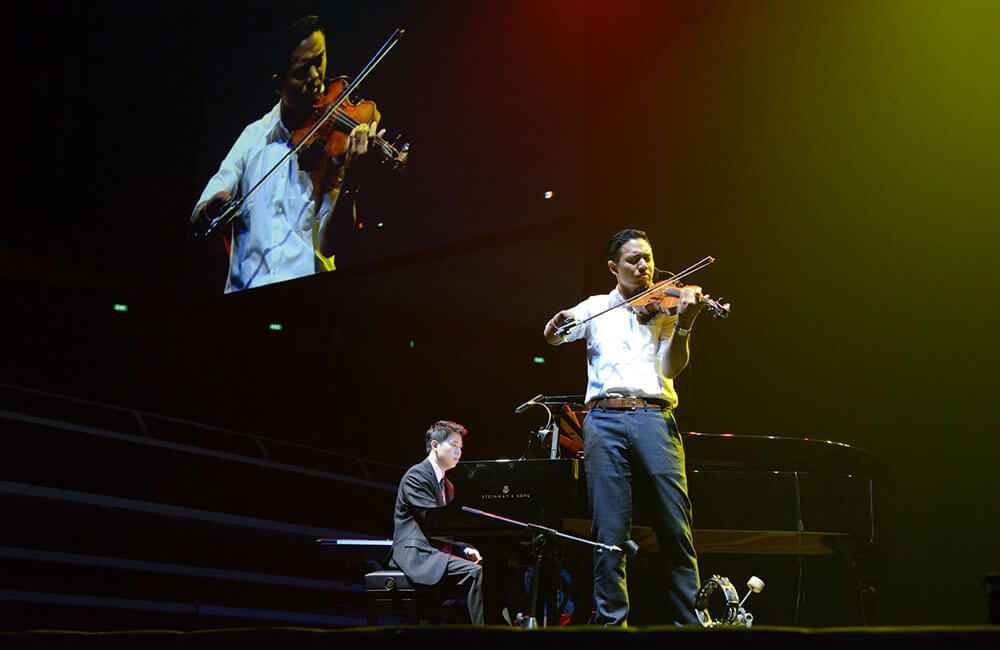
Canadian violinist Adrian Anantawan and pianist Azariah Tan, from Singapore, perform at the True Colours Festival concert.

